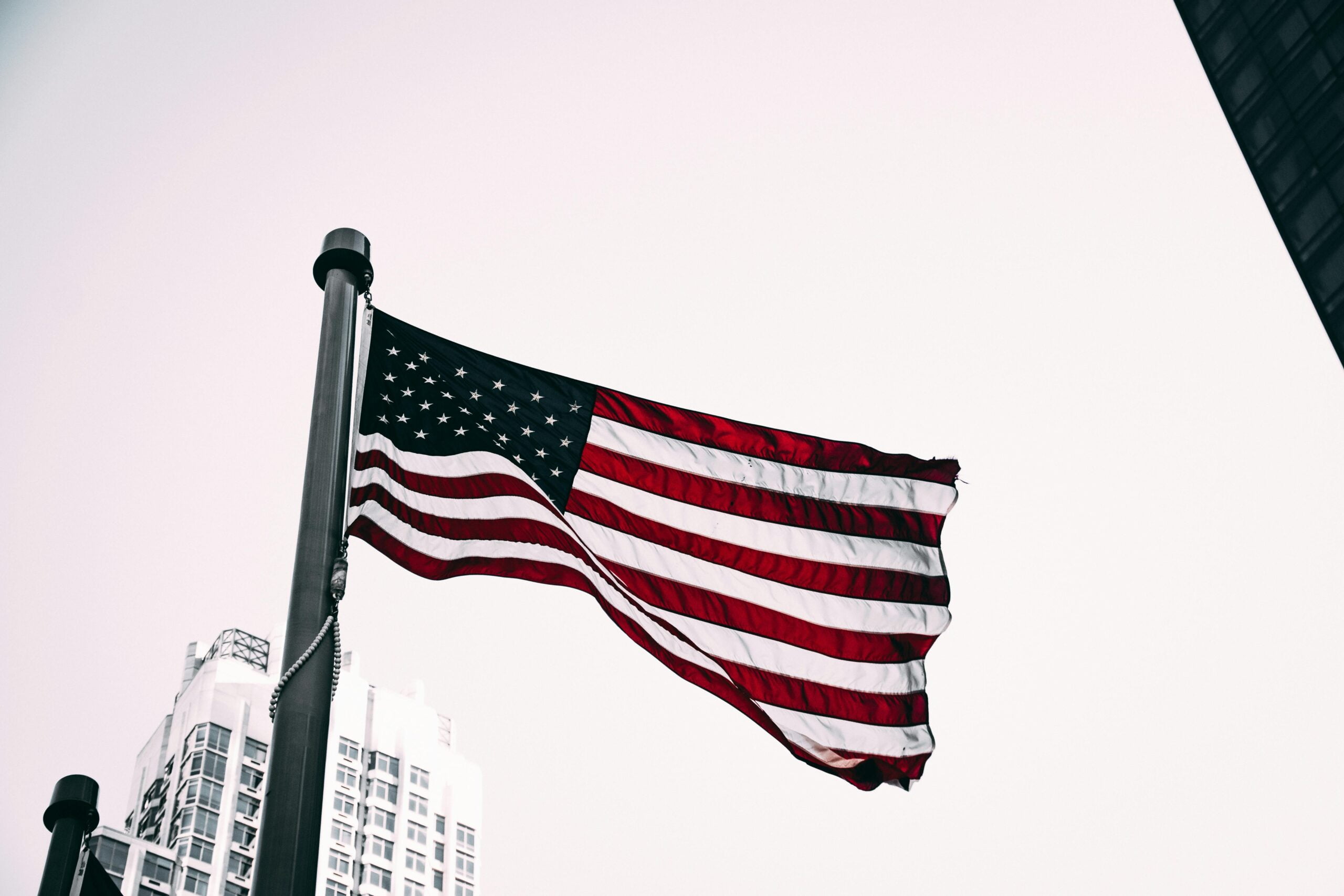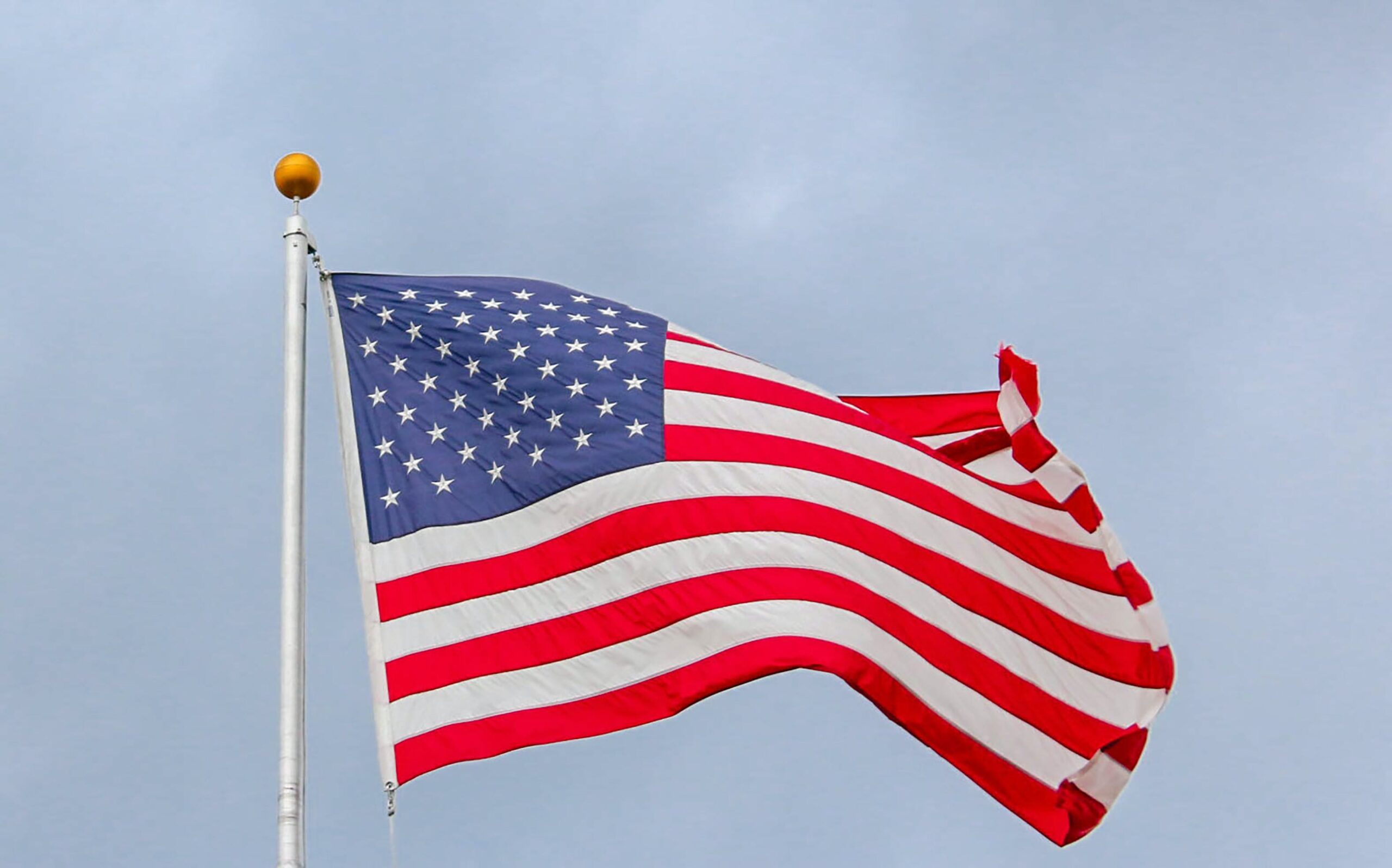Unskilled Jobs In USA With Visa Sponsorship. In an era marked by globalization and the pursuit of talent across borders, the United States remains an attractive destination for individuals seeking employment opportunities. Among the myriad of positions available, unskilled jobs play a pivotal role, providing essential services and supporting various sectors of the economy.
For many aspiring immigrants, securing a job in the U.S. with visa sponsorship holds the promise of not only employment but also a pathway to realizing their American dream. However, navigating the complexities of visa sponsorship while seeking unskilled work presents unique challenges and considerations.
Unskilled Jobs In USA With Visa Sponsorship And Salaries
Here’s a list of some unskilled jobs in the USA with visa sponsorship options, along with estimated average annual salary ranges (remember, salaries can vary depending on location, experience, and specific company):
Agriculture:
- Farmworker (planting, cultivating, harvesting crops): $23,000 – $28,000 (Visa type: H-2A)
- Animal Caretaker: $24,000 – $30,000 (Visa type: H-2A)
Hospitality:
- Hotel Housekeeper: $21,000 – $26,000 (Visa type: H-2B)
- Food Preparation Worker (kitchen assistant): $22,000 – $27,000 (Visa type: H-2B)
Construction:
- Construction Laborer (general tasks): $25,000 – $32,000 (Visa type: H-2B)
Retail:
- Stocking Associate (arranging and replenishing merchandise): $20,000 – $24,000 (Less common for sponsorship)
Facility Services:
- Janitorial Staff/Cleaner: $22,000 – $27,000 (Less common for sponsorship)
Delivery Driver: $28,000 – $35,000 (Valid driver’s license required, sponsorship less common but possible)
Important Notes:
- Visa sponsorship for these jobs is not guaranteed and depends on the employer’s specific needs and willingness to navigate the process.
- Some employers might require some experience or on-the-job training even for unskilled positions.
- Salary ranges are estimates based on national averages and may vary depending on location and specific job duties.
Additional Tips:
- Focus on in-demand skills: Research labor shortages in the US and highlight any relevant skills you possess, even if they seem basic (e.g., strong work ethic, ability to follow instructions).
- Look for companies with a history of sponsoring visas: Target multinational corporations or those in industries known for labor shortages.
- Consider consulting an immigration attorney: This can be helpful for understanding the visa sponsorship process and your eligibility.
This article delves into the landscape of unskilled jobs in the USA with visa sponsorship, exploring the opportunities, requirements, and implications for both employers and prospective employees.
What Is Visa Sponsorship?
Visa sponsorship, in the context of employment in the US, refers to the process where a US employer takes responsibility for helping a foreign worker obtain a visa to work in the United States. It involves the employer acting as your advocate throughout the visa application process.
Here’s a breakdown of the key aspects of visa sponsorship:
Employer’s Role:
- Justification: The employer needs to demonstrate that they were unable to find a qualified US citizen to fill the position you’re applying for. This usually involves advertising the job and going through a recruitment process.
- Petition Filing: If they believe you’re the best candidate, they’ll file a petition with the US Citizenship and Immigration Services (USCIS) on your behalf. This petition initiates the visa sponsorship process.
Visa Types Requiring Sponsorship:
- H-1B Visa: Common for specialty occupations requiring a bachelor’s degree or higher in the specific field.
- L-1 Visa: For intracompany transfers, allowing employees of a foreign company to work in a branch or affiliated US company.
- Other Work Visas: Several other visa categories require employer sponsorship, depending on your profession and qualifications.
Benefits for the Employer:
- Access to a wider talent pool: Sponsorship allows them to consider highly-skilled foreign workers for positions they might struggle to fill with US citizens alone.
- Filling critical skill gaps: Sponsorship can help address labor shortages in specific industries.
Benefits for the Worker:
- Opportunity to work and live in the US: Sponsorship opens doors for foreign workers seeking to advance their careers or explore new opportunities in the US.
- Employer support: The sponsoring employer can provide guidance and support throughout the visa application process.
Remember:
- The process can be competitive. Employers will likely prioritize candidates with strong skills and qualifications that align with the job requirements.
- Consulting an immigration attorney can be helpful to navigate the legalities of the visa sponsorship process.
Overall, visa sponsorship is a collaborative effort between a US employer and a foreign worker to navigate the US immigration system and secure a work visa.
How Do I Get A Visa Sponsored Job In USA?
Landing a visa-sponsored job in the US involves two main steps: securing a job offer with a US employer willing to sponsor your visa, and then applying for the specific visa itself. Here’s a breakdown:
Step 1: Finding a Visa-Sponsoring Employer
- Target Companies: Look for companies with a history of sponsoring visas. These could be multinational corporations, universities, or consulting firms.
- Job Boards: Utilize job boards that highlight sponsorship opportunities. Some general job boards might have filters for this, or you can explore resources like “[H1B database]” to find H-1B specific listings (a common visa type).
- Networking: Build connections with professionals in the US, especially those in your field. Attending industry conferences or joining online forums can be helpful.
Step 2: Applying for the Visa
- Employer Petition: Once you have a job offer, your employer will file a petition with the US Citizenship and Immigration Services (USCIS) on your behalf.
- Visa Type: The specific visa type you’ll need depends on your job and qualifications. Common work visas include H-1B for specialty occupations and L-1 for intracompany transfers.
- Visa Application: After USCIS approval, you can apply for the visa at a US consulate or embassy in your home country.
Additional Tips
- Focus on In-Demand Skills: Having skills in high demand can make you a more attractive candidate for sponsorship. Research occupations listed on the US Department of Labor’s website for ideas.
- Highlight Qualifications: Showcase your education, experience, and achievements to convince employers you’re the best fit, even compared to US citizens.
- Immigration Attorney: Consider consulting an immigration attorney to navigate the complexities of the visa process.
Remember, the process can be competitive, so be prepared to put in the effort for both job search and visa application.
How Do I Find A Visa Sponsor?
There are two main approaches to finding a visa sponsor through employment in the US:
Targeting Sponsoring Companies: Look for employers who have a history of sponsoring visas for foreign workers. Here’s how to find them:
- Identify Industries: Multinational corporations, universities, and consulting firms are more likely to sponsor visas due to their global operations and need for specialized skills.
- Job Boards: Utilize job boards that specifically advertise sponsorship. Look for filters related to visa sponsorship or explore resources like “[H1B database]” (common visa for specialty jobs) for dedicated listings.
- Networking: Build connections with professionals in the US, especially those in your field. Attend industry conferences or join online forums to connect with potential employers.
Applying for Jobs with Sponsorship Mention: Many companies openly advertise sponsorship along with the job description. Look for these keywords:
- “Visa Sponsorship Offered”
- “Employer will sponsor work visa”
- “H-1B Sponsorship available” (or relevant visa type)
Here are some additional resources to help your search:
- General Job Boards: Many major job boards have filters for “visa sponsorship” or similar terms.
- Company Websites: Check the career pages of companies you’re interested in. They might have dedicated sections for international applicants or mention sponsorship opportunities.
- Recruitment Agencies: Immigration-focused recruitment agencies can connect you with employers seeking foreign workers.
By combining these strategies, you’ll increase your chances of finding a visa-sponsoring employer in the US. Remember, a strong skillset in high demand and a well-crafted resume highlighting your qualifications will make you a more attractive candidate for sponsorship.
Can a Company Sponsor Me To Work In USA?
Yes, a US company can definitely sponsor you to work in the USA, but there are certain conditions and processes involved. Here’s a breakdown:
Employer’s Role in Sponsorship:
- Demonstrating Need: The company needs to prove that they couldn’t find a qualified US citizen for the position. This usually involves advertising the job and going through a recruitment process.
- Petition Filing: If they’re convinced you’re the best fit, they’ll file a petition with the US Citizenship and Immigration Services (USCIS) on your behalf. This petition initiates the visa sponsorship process.
Types of Work Visas (Sponsorship Required):
- H-1B Visa: Common for specialty occupations requiring a bachelor’s degree or higher in the specific field.
- L-1 Visa: For intracompany transfers, allowing employees of a foreign company to work in a branch or affiliated US company.
- Other Work Visas: Several other visa categories require employer sponsorship, depending on your profession and qualifications.
Finding a Sponsoring Employer:
- Target Companies: Look for multinational corporations, universities, or consulting firms with a history of sponsoring visas.
- Job Boards: Utilize job boards with filters for “visa sponsorship” or explore resources like [H1B database]” for specific visa types.
- Networking: Build connections with US professionals in your field. Industry conferences or online forums can be helpful.
Which Unskilled Jobs are in Demand in USA?
The term “unskilled” can be subjective, as many seemingly basic jobs require specific abilities or experience. However, there are several high-demand areas in the US where you can find opportunities with minimal formal education or training. Here are some examples:
Agriculture: From farmworkers planting and harvesting crops to animal caretakers, agricultural jobs are crucial but often face worker shortages.
Hospitality: Hotels, restaurants, and tourist destinations constantly need housekeepers, food preparation workers, and waiters/waitresses to keep things running.
Construction: Construction laborers and helpers are essential for various construction projects. While some heavy machinery operation might require certifications, there are many general labor positions.
Retail: Stocking shelves, cashiering, and assisting customers are all tasks you can find in retail stores and warehouses.
Facility Services: Janitorial staff and cleaners are always needed to maintain cleanliness in offices, buildings, and other spaces.
Delivery Drivers: With the rise of e-commerce, delivery drivers are in high demand to transport goods. A valid driver’s license is typically required.
Important Note: While these jobs may not require extensive formal education, they often involve physical labor, repetitive tasks, and potentially demanding work hours.
Here are some additional pointers for finding in-demand jobs in the US:
- Job Boards: Look for job boards that cater to specific industries or focus on entry-level positions.
- Temporary Staffing Agencies: These agencies connect businesses with temporary workers, which can be a good way to get your foot in the door.
- Company Websites: Check the career sections of companies in your target sectors.
Note: even for unskilled jobs, presenting yourself well and demonstrating a strong work ethic can increase your chances of getting hired.
How Do I Find Sponsors Online?
The way you find sponsors online depends on whether you’re an individual creator (YouTuber, blogger, etc.) or an organization seeking sponsorship for an event or program. Here’s a breakdown for both:
For Individual Creators:
- Sponsorship Marketplaces: Platforms like [Looking For Sponsor] connect creators with companies seeking sponsorships. You can create a profile highlighting your audience and content to attract potential sponsors.
- Social Media Marketing: Build a strong social media presence showcasing your reach and engagement. Brands often scout potential sponsors through social media. Include relevant hashtags and target your content to brands that align with your niche.
- Direct Outreach: Research companies in your niche and identify their marketing teams. Craft compelling proposals outlining your audience demographics, engagement metrics, and the value you offer as a sponsor.
For Organizations Seeking Sponsors:
- Event Sponsorship Platforms: Websites like [SponsorMyEvent] allow event organizers to list their events and connect with potential sponsors searching for relevant opportunities.
- Industry Associations: Many professional associations maintain databases or resources for sponsorship opportunities within their specific field.
- Social Media Promotion: Promote your event or program on social media, highlighting sponsorship benefits and targeting companies that align with your cause.
Additional Tips:
- Clearly Define Your Value Proposition: For both creators and organizations, clearly articulate the benefits you offer potential sponsors. This could be increased brand awareness, access to a targeted audience, or positive brand association.
- Data is Key: When creating proposals or promotions, use data to showcase your reach, audience demographics, and past successes (if applicable). This helps sponsors understand the return on their investment.
- Be Professional: Always maintain a professional approach when contacting potential sponsors. Tailor your outreach to each company and highlight the specific value you bring to their brand.
Don’t that forget that securing sponsorships takes time and effort. Be persistent, refine your approach, and showcase the unique value you offer to potential sponsors.
What companies will sponsor me?
Unfortunately, I can’t predict exactly which companies will sponsor you because it depends on several factors:
- What you do: Are you a content creator (YouTuber, blogger, etc.), an athlete, an event organizer, or something else entirely? Different companies sponsor different things.
- Your niche: What kind of content do you create, what sport do you compete in, or what type of event are you organizing? Companies will sponsor things that align with their brand and target audience.
- Your audience: How big is your audience and who are they? Sponsors are looking for exposure to a relevant demographic.
- Your achievements: Do you have a large social media following, a history of successful events, or a winning track record? Sponsors want to partner with someone who will deliver a return on their investment.
However, I can help you with the search! Here are some steps you can take:
- Identify your target companies: Think about the brands that would be a good fit for what you do. Consider their products, target audience, and brand image.
- Research sponsorship opportunities: There are online marketplaces like [Looking For Sponsor] for creators, and platforms like [SponsorMyEvent] for events. Industry associations might also have resources.
- Check company websites: Many companies have dedicated sections on their websites for sponsorships. Look for “partnerships” or “sponsorships” pages.
- Use social media: Follow your target companies on social media and see if they’ve sponsored similar things in the past.
- Red Bull.
- Taco Bell.
- HOKA.
- HyperX.
- Ironside Computers.
Here are some additional tips:
- Build a strong online presence: Regardless of what you do, having a professional and engaging online presence will make you more attractive to sponsors.
- Craft a compelling proposal: Once you’ve identified a potential sponsor, put together a proposal that outlines your value proposition and the benefits they’ll get from sponsoring you.
- Be persistent: Securing sponsorships can take time and effort. Don’t get discouraged if you don’t hear back right away, follow up with potential sponsors and be persistent in your efforts.
By following these tips and putting in the hard work, you’ll increase your chances of finding companies willing to sponsor you.
Conclusion:
In conclusion, unskilled jobs in the USA with visa sponsorship offer a vital avenue for individuals seeking employment opportunities and a pathway to a new life in America. While these positions may not require specialized skills, they are integral to the functioning of various industries and sectors, contributing to the nation’s economic vitality.
However, navigating the process of securing visa sponsorship for unskilled work requires diligence, patience, and often assistance from legal experts well-versed in immigration laws. Employers seeking to sponsor foreign workers must adhere to regulatory frameworks while aspiring immigrants must meet eligibility criteria and fulfill necessary documentation.
Despite the challenges, the prospect of building a better future in the land of opportunity continues to attract individuals from around the world to pursue unskilled jobs with visa sponsorship in the United States.






